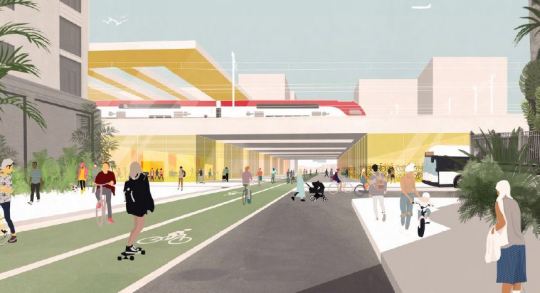“Demarcus Doss and his girlfriend, Joanna Oller, were stuck in rush-hour traffic on the Interstate 80 highway in Richmond, California, when the dark gray Dodge Charger that had been ominously following them pulled into the exit lane alongside their minivan. A man was leaning waist-deep out of the back driver’s side window, a black semi-automatic pistol in hand.
Boxed in on all sides by bumper-to-bumper traffic, there was little Doss could do to avoid the barrage of gunfire. As bullets ripped through the passenger door and window, Doss reached over to shield Oller from the attack. He was hit by multiple bullets and died from his injuries. Oller suffered a gunshot wound to her hand, but survived the ordeal.
This brazen afternoon killing in March 2017 was one of 189 freeway shootings that took place in the San Francisco Bay Area between November 2015, when the California highway patrol began keeping track, and April 2019. The number of freeway shootings has increased on nearly every major highway in the region, law enforcement officials say, from San Jose to Silicon Valley, Oakland and San Francisco.
caldecott tunnel driver shot in head expected to survive. eastbaytimes, 16.06.19.
“The Bay Area has seen a sharp decline in gun homicides in the past decade, even as inequality and poverty have been on the rise, but highways are one of the few areas where gun violence is up.
Bay Area law enforcement and elected officials do not have an iron-clad explanation of why freeways have become a more common venue for gun violence, but they point to a series of factors, including gang conflicts and the displacement of longtime residents from cities like Oakland, where the average cost of rent has exceeded many working-class families’ budgets.
pittsburg police captain, patrick wentz, and the deputy district attorney for contra costa county, mary knox, monitor the freeway security network command center, a system used to track down suspects in freeway shootings.
“Demarcus Doss’s alleged killers might have escaped were it not for a witness who called 911 as the gray Dodge Charger sped down an offramp. A Richmond police officer followed the car to a house where Elliott Johnson, 24, of Richmond, and two 17-year-old boys, got out. All three were arrested.
Johnson and one of the juveniles, Bryan Anderson, were charged with Doss’s murder and the attempted murder of Joanna Oller. Police say a test of Anderson’s hands for gunshot residue was positive. As with other freeway shootings, prosecutors say Johnson and Anderson are gang members. Doss, however, had no gang affiliations and the exact motive for his murder remains unclear.
Since Doss’s killing, the freeway shootings show no sign of slowing. In one 10-day stretch in June, there were six freeway shootings in the region. Three took place in a 24-hour span of time on a patch of San Jose highway. One attack left 33-year old Matthew Rios dead, and in another a 12-year old girl was injured by shattered glass. On Monday, a shooter opened fire on an SUV on Interstate 880 in Oakland, injuring the driver. The stretch of highway was shut down for hours as California Highway Patrol searched for evidence on the road.
“driver wounded in I-880 shooting in oakland.” eastbaytimes, 22.07.19.
“Demnlus Johnson, the Richmond city councilmember, said that surveillance is a necessary investigation tool, but if law enforcement and public officials want to see freeway shootings end, they need to combine efforts to invest in intervention and prevention among residents who are at risk of being perpetrators and victims.”
pittsburg police captain, patrick wentz, at the command center of the freeway security network.










